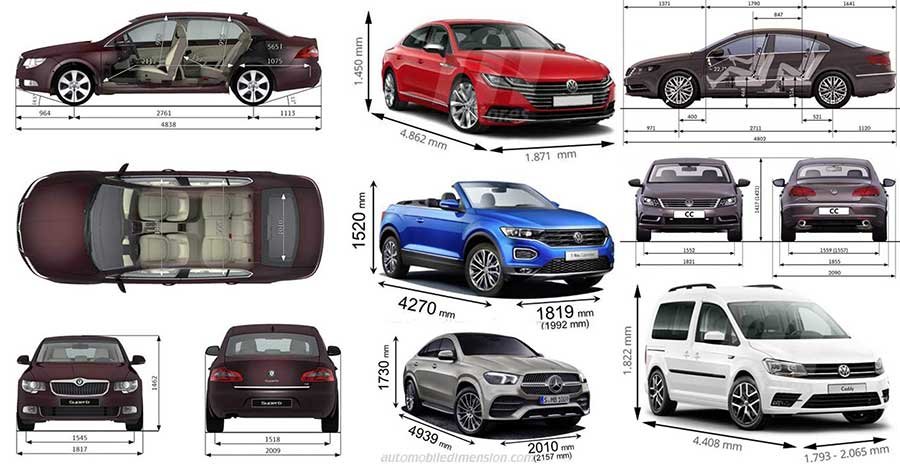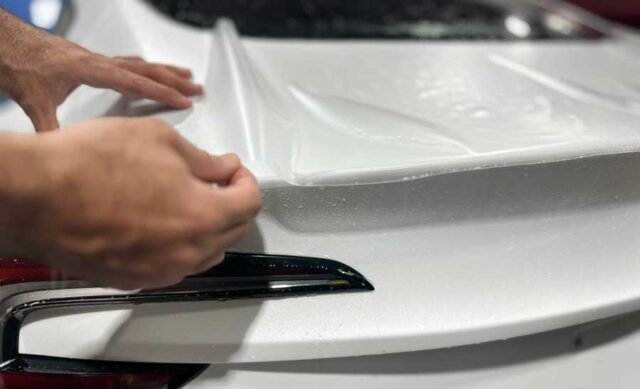When it comes to safeguarding your car’s paint job, Paint Protection Film (PPF) has emerged as a popular choice among car enthusiasts. This transparent, durable layer acts as a shield against scratches, chips, and environmental damage, prolonging the pristine appearance of your vehicle. In this article, we’ll delve into the intricacies of PPF costs for various types of cars, including SUVs, luxury models, and everyday vehicles, and provide insights into different levels of coverage to help you make informed decisions.
PPF cost for different type of cars
1. Paint Protection Film Cost for SUV:
SUVs are known for their larger surface area, which often translates to higher PPF installation costs. The expense of applying PPF on an SUV typically falls within the range of $4500 to $7,000. Factors such as the vehicle’s size and the type of PPF material selected play a crucial role in determining the final cost.
Additionally, the complexity of the SUV’s design, such as intricate curves or body lines, can increase labor time and costs. Premium PPF brands like XPEL Ultimate Plus or SunTek Ultra may also elevate the price due to their advanced features like self-healing properties and enhanced clarity.

2. How Much PPF Do I Need for My Car:
Determining the requisite amount of PPF for your car involves assessing factors such as the vehicle’s dimensions and the specific areas requiring protection. Common areas for PPF application include the front bumper, hood, side mirrors, and door edges. Consulting a professional installer for personalized recommendations based on your car’s make and model can help ensure optimal coverage.
It’s also essential to consider your driving habits. For instance, if you frequently drive on highways or in areas with gravel roads, you might opt for more extensive coverage to protect against potential paint damage from debris.

3. How Much Does Full PPF Cost:
For car owners seeking comprehensive protection, opting for full PPF coverage is paramount. The starting price for full car PPF installation is $4,500. However, actual costs can vary significantly, ranging from $4,500 to $7,000, depending on factors such as the vehicle’s size, the quality of the PPF material, and the extent of coverage desired.
The choice of PPF material significantly influences the cost. High-quality films with features like hydrophobic surfaces, UV resistance, and self-healing capabilities tend to be more expensive but offer superior protection and longevity.
4. Full Front End PPF Cost:
Given the susceptibility of the front end to damage from road debris and insects, investing in PPF for this area is common. Full front end PPF installation typically encompasses the front bumper, hood, fenders, and side mirrors. Costs for this level of coverage typically range from $1,500 to $2,500, depending on the vehicle’s size and the intricacy of the installation process.
This package is particularly beneficial for vehicles that are often driven at high speeds or in areas with a high incidence of road debris, as it provides comprehensive protection to the most exposed parts of the car.
5. Partial Front PPF Cost:
Partial front PPF installations cater to individuals prioritizing protection for specific areas, such as the front bumper and hood. These installations offer targeted protection at a lower cost, typically ranging from $750 to $1,500, depending on the size and complexity of the vehicle.
While more affordable, this option may leave some areas vulnerable to damage. It’s a suitable choice for those seeking a balance between cost and protection, especially if the vehicle is primarily used for city driving.
6. Partial PPF Cost:
Partial PPF installations provide protection for select areas of the vehicle, such as the hood, side panels, or door edges. Costs for these installations range from $300 to $1000, depending on the size and number of areas being covered.
Partial PPF installations can be customized to target specific areas prone to damage, such as door sills, trunk ledges, or rear fender flares. This flexibility allows car owners to address their unique protection needs without incurring the cost of full coverage.
Examples of Full PPF Prices for Different Car Models:
| – | Car Models | PPF Cost |
| 1 | Tesla Model Y | $4500 |
| 2 | BMW 3 Series | $4800 |
| 3 | Mercedes-Benz C-Class | $5000 |
| 4 | Range Rover Sport | $4800 (Starting Price) |
| 5 | Chevrolet Corvette | $6000 |
| 6 | Audi Q5 | $4700 |
| 7 | Ford Mustang | $5000 |
| 8 | Porsche 911 | $6000 |
| 9 | Toyota RAV4 | $5000 |
| 10 | Honda Civic | $4500 |
| 11 | Jeep Wrangler | $4700 |
| 12 | Subaru Outback | $4800 |
| 13 | Lexus RX | $5200 |
| 14 | Volkswagen Golf GTI | $4700 |
| 15 | Nissan Rogue | $4600 |
Conclusion:
In conclusion, the cost of PPF installation on cars varies depending on factors such as the vehicle’s size, the type of PPF material used, and the desired coverage level. Whether opting for full or partial coverage, investing in PPF ensures protection against paint damage, preserving your car’s appearance and value. Consult with a reputable PPF installer to determine the most suitable option for your car’s needs and your budget.
Ultimately, investing in PPF is a proactive measure to maintain your vehicle’s aesthetic appeal and resale value. By selecting the appropriate coverage level and quality of film, you can ensure long-term protection against environmental and road hazards.






